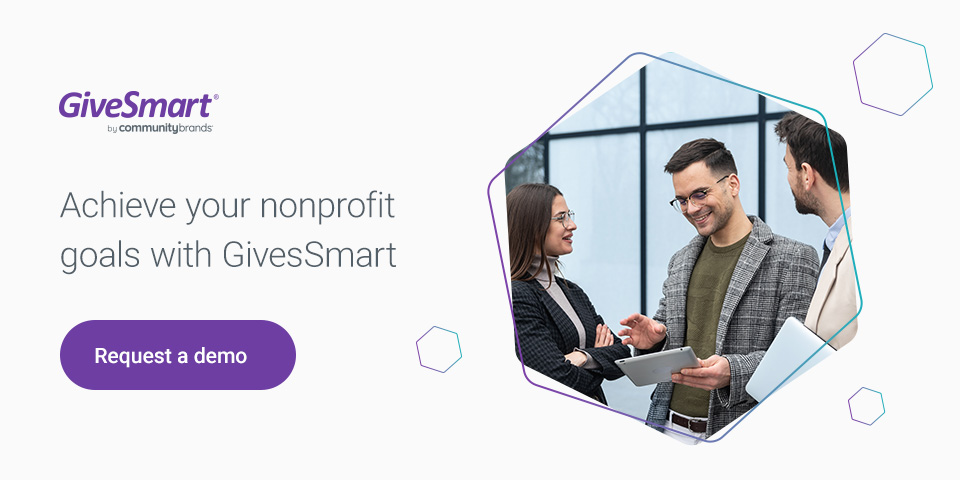Oct 23, 2023
Ways to Stand Out on Grant Applications

As part of a nonprofit or charitable organization, you know funding is critical for continuing your mission. A significant portion of your funding may come from grants, which help support your programs in many different ways. However, writing grant applications can be a very time-consuming and stressful process. Even the most experienced writer may feel pressure to be chosen by grant funders out of dozens or hundreds of applications.
Investing your time, effort, and resources into writing a grant proposal can be frustrating if it doesn’t pay off. For this reason, it’s critical to make your grant proposal impactful and notable to a selection committee. We’ve outlined our top tips for nonprofits applying for grants below.
Strategies for Standing Out on Grant Applications
The most minor changes on your grant application can make all the difference in helping you get noticed as a strong match to a grant funder. Here are some ways to make your grant proposal stand out.
1. Ensure your nonprofit aligns with their values
The first step to winning a grant proposal is to check that your nonprofit is a good fit for the funding organization. Because writing a grant application and waiting for approval takes time, it’s important to only apply for grants that match well with your mission. Before writing your grant, research the grant funder to determine what they might be interested in supporting. Generally, most grant funders will display their focus areas and funding guidelines online to give you a detailed idea of what they’re looking for.
Doing some digging beforehand gives you a clearer understanding of your audience, such as why they created the grant, their mission statement, their values, and what they want to see on an application. This crucial information will help you tailor your grant application to stand out.
Though the success of your mission might be able to persuade a program officer, you’ll have the best chance at winning funding when you apply for grants that strongly align with your mission.
2. Double-check the requirements
If you’re still unsure whether your nonprofit is a good fit for the grant after your preliminary research, you can always get in touch with a program officer. Contacting a program officer will help you understand whether your mission and program fit their guidelines. Program officers are there to answer your questions about their foundation.
If you find that your mission aligns with their grant requirements, you can still contact a program officer to learn more details about the grant itself or additional information about what they’re looking for. When in doubt, don’t be afraid to reach out to the organization and express your interest. This might even give you a great opportunity to put your nonprofit in their sights!
3. Get to know the funding organization
Grant funders may be more likely to fund a project from an organization they’ve interacted with in the past over one they’ve never heard of. While this is not always the case, making a good impression with grant funders through networking, community events, and your online presence are effective ways to make your grant proposal stand out. You might improve your chances of success by getting to know a program officer or chatting with other members of the organization to learn about what they do.
Many grant funders look for projects that need support in their local community. Getting involved in community events and conferences is a great way to network and meet people who may help you achieve your goals. Though knowing someone at the funding organization is not a guarantee that your application will be at the top of the pile, it helps important members of your community regard your nonprofit with positivity.
4. Follow the grant application instructions
An easy way to get your grant application rejected is by not following the directions, even if you meet the eligibility requirements. To prevent this issue, it’s critical to have a thorough understanding of the instructions and ensure you follow them correctly.
Depending on the grant funder, your nonprofit’s application may be one of hundreds or thousands. After spending so much time and effort to write the perfect proposal, the last thing you want is for your application to be thrown out over a minor error. You’ll want to carefully read the instructions to determine if the funder wants you to submit specific items or follow a certain format. It’s common for grant funders to have an initial screening process to eliminate any applications that do not have all the required elements.
An effective way to avoid incomplete or incorrect applications is by having several members of your nonprofit double-check your application. Having several pairs of eyes on the same proposal can help you catch mistakes and ensure all attachments are correct.
5. Check out their list of grantees
Another way to help you improve your chances of winning grants is by researching what the organization has funded in the past. Most grant funders will provide a funding range for you to ensure that the amount you want to request for your project is within their limit. However, doing outside research can ensure you’re not applying for grant amounts that do not align with their offerings.
Many foundations must make a list of their grantees publicly accessible online. This is a quick and easy way to determine what kind of work the foundation typically funds and the amounts they’ve granted. If your nonprofit’s mission is similar to that of those on the list, you might have a better shot at securing funding for your upcoming project. Your request may get further down the application process if you ask for a reasonable amount from the funding organization.
6. Create a strong impact statement
Because the goal of nonprofits is to develop a mission that supports others, it can be challenging to stand out among other amazing organizations that also strive to help their communities. On your grant application, you’ll likely answer a series of questions about what your organization does or the drive behind a specific program. This is the perfect opportunity to describe who your program serves, why you developed this program, and why it’s important for you to secure funding.
This is one of the most important elements of your application because it allows you to truly showcase your program and help the funding organization understand why their support is needed. Take your time to develop an accurate mission statement to depict what your program entails and why it’s important in your community. To help you stand out even further, consider writing a success story about how your program has helped others in the past and what it can do for more people in the future.
7. Use similar language to get your application noticed
When grant funders list their requirements for grant applications, you might spot a few keywords that they use several times throughout their listing. These buzzwords or phrases will give you insight into what’s truly important to the foundation and what they’re looking for in a grantee. Many grant funders will have several rounds of review to narrow down applications, so using similar language in your proposal can help them see your nonprofit as a strong fit.
Read through the funder’s posting several times and see if any words are repeated over and over. What headings, titles, and adjectives do they use to describe their priorities? With that being said, be sure to only use keywords that actually match your organization’s values and mission. Going overboard with keywords or stuffing in phrases that seem out of place can look suspicious and make them think your nonprofit has nothing original to contribute.
8. Use data to back up your request

Many grant funders want specific details about how you plan to use the grant money to support your project or mission. You can make a good impression by using software to give them insight into your program’s efforts. Using data can streamline the application process by quickly allowing you to quantify your needs for the current project and show how you have accomplished other initiatives in the past.
Data also shows your grant funder that your mission truly makes a difference in the lives of those you serve. For example, you might use data to show that your nonprofit has helped 2,000 rescue animals find loving homes or served over 500 meals to those in need. These metrics allow you to measure your impact and pass those critical details on in your grant application.
Likewise, if you secure funding, you’ll need to periodically check in with your grant funder to show that you’re meeting their requirements and using the funds as you said you would. This reporting is made much easier with software that can consistently and accurately track the data you need to provide.
9. Keep it short and sweet
Following length requirements is key to getting your grant application further down the approval process. Though it’s crucial to display details about what your nonprofit does and how it impacts the community, keep to the requested limit or word count range as best as you can. Most grant applications will ask for specific information so they can really understand the ins and outs of your nonprofit organization, but don’t go overboard.
You might even be tempted to use up all the available word or page limits on your application to explain everything in as much detail as possible. However, keep in mind that the funding foundation will have many applications to go through, so adding fluff that does not need to be there can be tedious for reviewers. Remember, you might have tons of interesting facts or anecdotes about your nonprofit’s success but try to keep it to the point if it’s not directly relevant to the questions on the application.
10. List reasonable goals
Many grant applications will inquire about the goals you have for your program. This could include projected outcomes, event objectives, or general things you want to accomplish if you were to receive funding. When describing your goals, make sure they’re attainable and realistic. While it’s always great to shoot for the stars and dream big when it comes to an important mission, the grant funder likely wants to feel confident that you can reach the goals you set.
If you do receive funding, the last thing you want to have to do is tell your funding organization that you didn’t meet any of your goals. Confer with members of your organization to come up with top priorities and the actionable steps you can take to meet those ends. It’s fine to set a bit of a challenge for your organization, but don’t feel the need to inflate your projected outcomes to impress a grant funder.
11. Prepare any required attachments
You may need to submit specific documents to the foundation in addition to your application. These attachments might include:
- A list of your key members and their qualifications
- How your staff is involved with your project
- A list of your nonprofit’s board of directors
- Your nonprofit’s budget
- Your budget for the program or project
- Testimonials
- Outcomes from previous projects
The list of documents needed will likely be similar for each grant funder, but they can vary, so it’s important to double-check exactly what they request and ensure you follow their instructions correctly.
12. Review your website and social media pages
Just as a hiring manager might check your social media presence before giving you a position, it’s normal for a grant panel to look into your online presence to learn more about your nonprofit. This might include your organization’s website and social media accounts to better understand what you offer to the community.
Consider what your potential funder might find if they search for your organization. While you don’t need to create a social media page on every single app there is, having no online presence might make your organization look non-existent.
Additionally, grant funders may have difficulty trusting your organization if they cannot see how you interact with donors, members, and supporters across your channels. By polishing up your online presence, you can present an organization that looks capable, trustworthy, and reputable.
13. Prepare ahead of time
Writing your grant proposal at the last minute is a recipe for disaster. On top of filling out the application and including all the required documents, scrambling to send out grant proposals on time can also make you more likely to forget important elements, make a mistake, or misunderstand the instructions. To avoid this issue, it’s best to create a timeline ahead of when your grant proposals are due. This will give you a visual to help you and your team know when to start writing and gathering materials before submission.
This is especially helpful if your nonprofit is applying for several grants at once, as it’s easy to get the requirements mixed up. Giving yourself enough time to do everything correctly will give you the best chance at submitting a strong request.

Achieve Your Nonprofit Goals with GivesSmart
Grant writing can be a daunting task. Using the above tips, you can help your nonprofit stand out to grant funders and acquire funding for your most important initiatives. To help manage your future fundraising efforts, use an all-in-one software system to boost your organization’s processes and implement a data-centered approach to your campaigns.
At GiveSmart, it’s our goal to help nonprofits like yours operate more efficiently with flexible, customizable features that enable you to focus on your top priority — furthering your mission!
From donor management to virtual and hybrid fundraising, our user-friendly platform makes it easier to raise money for your efforts. To learn more about how GiveSmart can empower and transform your mission, request a demo today.
Related



